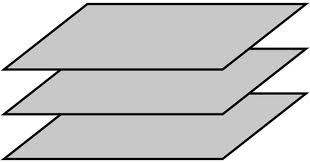
SPC-ELL: Parallel Structure
Self-Paced Collection of English Language Lessons
Make sure you "allow" blocked content and turn your speakers on to use this SoftChalk lesson. Watch the videos, listen to the recordings, and read the explanations on each page. Put your mouse over the bold words
![]() to read and see more. You can visit each page and try each activity as often as you want for practice.
to read and see more. You can visit each page and try each activity as often as you want for practice.
When you want your answers to count, complete all activities and questions in order on each page, click "Check Answers" and then next page to continue.
Important - if you want to submit your scores, click Print Score Summary and/or Email Score on the last page according to your teacher's instructions. If you see a Finish button on the last page, click on it to submit your scores directly to your teacher (not all students will see the "Finish" button).
|
At the end of this lesson, you should be able to:
|
NOT parallel |
Click the "play" arrow above to listen.
What does "parallel" mean? Here are some pictures of things that are parallel.



In writing, "parallel structure" refers to using two or more words, phrases, or clauses that have similar parts of speech or patterns.
Click the "play" arrow above to listen.
Take a look at the following examples:
|
NOT Parallel |
Parallel |
|---|---|
|
Of all the sports I've played, I prefer tennis, handball, and playing golf. |
Of all the sports I've played, I prefer tennis, handball, and golf. (Three nouns are parallel.) |
|
Yesterday, I was tired, hungry, and I felt sick. |
Yesterday, I was tired, hungry, and sick. (Three adjectives are parallel.) |
|
If you're looking for the car keys, you should look under the table, the kitchen counter, and behind the refrigerator. |
If you're looking for the car keys, you should look under the table, on the kitchen counter, and behind the refrigerator. (Three prepositional phrases are parallel.) |
|
He is a good choice for manager because he works hard, he keeps calm, and is well-liked. |
He is a good choice for manager because he works hard, he keeps calm, and he is well-liked. (Three clauses are parallel because they all have a subject, verb, adverb.) |
Click the "play" arrow above to listen.
Parallel sentences use two or more words, phrases, or clauses that have similar parts of speech or patterns.
For example:
Sometimes you may have to change or add words to create parallel structure.
Watch this short video to see how to create parallel structure. (Make sure your speakers are on, but be warned - parts of it are loud!)
Try this Drag N Drop Activity to test your knowledge.
Click the "play" arrow above to listen.
We use conjunctions to connect words, phrases, and clauses in a sentence. This creates "parallel structure."
Examples:
Sometimes we need commas to separate parallel items in a sentence. Here is the comma rule:
|
CORRECT Comma Use |
INCORRECT Comma Use |
|---|---|
|
Steve and Joe are in class. |
Steve, and Joe are in class. |
|
Steve, Joe, and Andy are in class.* |
Steve Joe and Andy are in class. |
|
My favorite fruits are apples and oranges. |
My favorite fruits are apples, and oranges. |
|
My favorite fruits are apples, oranges, and bananas.* |
My favorite fruits are apples oranges and bananas. |
*Note: Using a comma before the last item in a list is optional. Both sentences below use commas correctly.
Try this Quiz Group to test your knowledge of comma rules.

Watch this short video to review parallel structure and then do the Test Yourself questions.
(This video does not have sound.)








Congratulations! You are now an expert on Parallel Structure. Click "Finish" to Submit Your Scores.
Azar, B. & Hagen, S., (2009). Understanding and Using English Grammar (4th Edition). White Plains, NY: Pearson Longman.